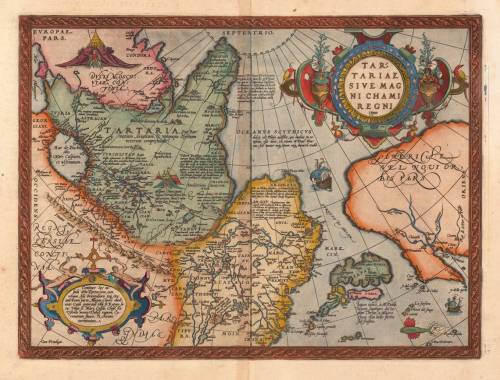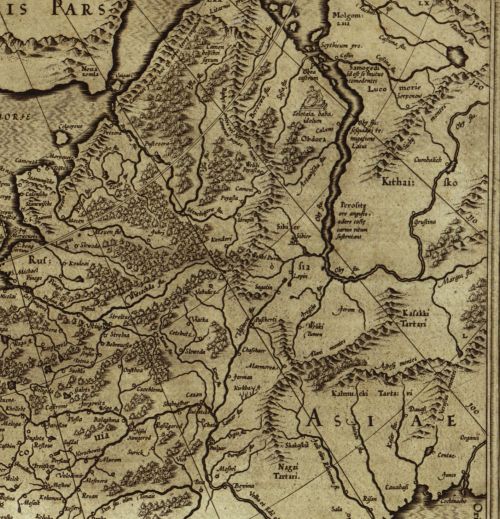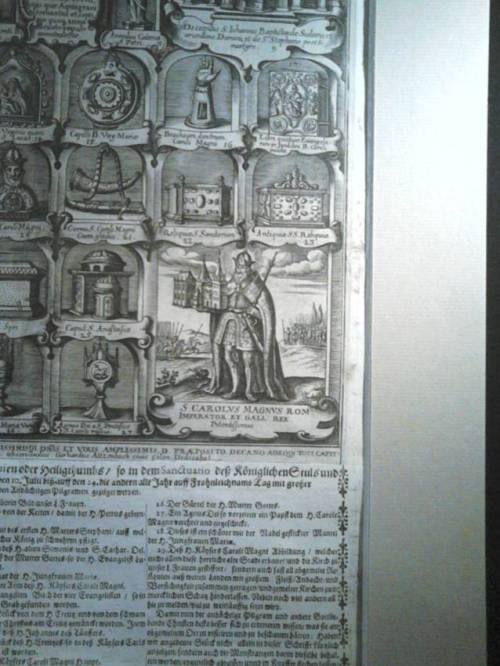We owe a lot to Anatoly Fomenko as researchers in the field of shortened Chronology.
The authors of the New Chronology were perfectly right while saying Tartaria was occulted from russian history books, and proved Tartaria was conquered in 1775 by Russia, and even regained temporary power in the beginning of the 19th century (some maps display it). They even proved that Tartars and Mongols from medieval times were not chinese looking mongolians but much nearer geographically. They said that they were known in the west as the Cossacks which lived in Ukraine, Crimea and other areas in the south of Russia, and that they were the regular army of the russian dynasties that preceded the Romanov.
Though they said that the great khan of Tartaria was the same character as the emperor of Russia (a czar is named khan in tartarian language, or bey in turkish and a simple prince or ruler). And they said he ruled over a worlwide tartarian empire, even in Europe.
This conviction leads the russian team to a big difficulty, wandering between some sort of 16th century theory and a 14-15th centuries theory. The fact is that there are very little elements before the 16th century, some books in greek or latin, but quite no true or rightly dated map. And from the 16th century, these maps do not display any kind of « tartarian empire » that would have tumbled down at the Romanov takeover. Though we do have maps of a roman empire and church that is exactly the old roman empire from 1530 and later. I did not find maps of Russia or Tartaria besides Ptolemy in the beginning of the 16th century.
![Russiae_Moscoviae_et_Tartariae_descriptio_[...]Jenkinson_Anthony_btv1b530405902_1](https://theognose.files.wordpress.com/2018/11/russiae_moscoviae_et_tartariae_descriptio_-jenkinson_anthony_btv1b530405902_1.jpeg?w=500) 1562 – Russiae, Moscoviae et Tartariae descriptio / auctore Antonio Ienkensono. Left high : Iohannes basilius magnus (great king, not Priest as usual), Emperor of Russia, Duke of Moscovia
1562 – Russiae, Moscoviae et Tartariae descriptio / auctore Antonio Ienkensono. Left high : Iohannes basilius magnus (great king, not Priest as usual), Emperor of Russia, Duke of Moscovia
This one from 1562 is one of the earlier ones. So Presbyter Johannes is not Batu Khan from 13th or 14th century as Fomenko says, but Ivan « the Terrible ». It seems Ivan does not rule Tartaria, which is not included in his titles. Permia (sometimes Perm) and Vyatka are well into the european Russia, and not Germany or Italy as the russian team says.
We could add that the earlier author – Ptolemy – is published in 1525 and 1541 in atlases and distinguish between asiatic Sarmatia (Russia, the european Sarmatia is Poland) and Scythia (former Tartaria). Though a map of Oronce Finé from 1531 use Tartaria and Polonia, he displays the name of the old tribes and the division of Gaul like Julius Caesar. France is the area around Paris, as is still present in the names of towns north of Paris like Roissy-en-France or Tremblay-en-France.
 1598 Abraham Ortelius. Duchy of Russia is distinct from Tartaria, and not mentioned as an empire.
1598 Abraham Ortelius. Duchy of Russia is distinct from Tartaria, and not mentioned as an empire.

1623 Rumold Mercator, part of a map of Tartaria. Notice « Cumbalich » on the Oby river. It is Cambalich on other maps.
Probably the Book of Wonders by Marco Polo was not written around 1230 nor published in the 15th century, but in the 17th century. Kubilay Khan is a 17th century ruler, and not the grandson of the 13th century Genghis Khan. And if he is his grandson, then Genghis Khan could have lived around the times of Ivan. As Presbyter Johannes earned a great fame in Europe, there is a possibility that Ivan did rule over Tartaria and was himself Genghis Khan but there is no proof of this and it is unlikely. From Ivan times to Romanov times, the boarders of Russia are quite identical and do not include Tartaria.
Fomenko is the father of New Chronology and is required to include Ptolemy’s maps as they are published : from the first part of the 16th century. The names displayed are not even Tartaria and Russia but Scythia and Sarmatia. So every time the words Mongolian or Tartarian are present in a chronical, it should be a chronical from the late 16th century or later. Moscovia is said to be a duchy, while Russia is an empire. There is a red Russia in Poland, a black Russia and a white Russia in Ukraine and Belarus (whose meaning is « white Rus » but was formerly known as Lithuania). It is known that Poland was the european Sarmatia, so if there ever was a slavic empire in the 16th century, it encompassed Russia, Belarus, Poland and parts of Ukraine. There are Cossacks in Ukraine and Hussards in Poland that could be the remnants of the regular army of this empire. We are formerly closer to the medieval Goths that invaded the late roman empire, and they could have used tartarian regiments of cavalry, that would have gained them the surname of Mongols or Tartars.
Fomenko and al. rely heavyly upon the identity of Carolus magnus « the Vth » (1500-1558) with Ivan the Terrible (1533-1584) as the ruler of a still worldwide tartarian empire, still centered upon Russia. The maps of the roman empire and of the empire of Carolus magnus in the 16th century do not display either Russia, Tartaria and Europe, nor the dispatched possessions of the Habsburg in 1558 (death of Carolus magnus), nor the « Holy roman empire » centered upon Germany and Austria but the whole european part of the old roman empire. His possessions included Gaul (France does not exist yet), but NOT Germany.

Museum Charlemagne, Aachen, lithography 17th century : S. Carolus magnus, emperor of Rome (or Romans), King of Gallia.
![Imperium_Caroli_Magni_cum_vicinis_[...]Bertius_Pierre_btv1b53032651m](https://theognose.files.wordpress.com/2018/10/imperium_caroli_magni_cum_vicinis_-bertius_pierre_btv1b53032651m.jpeg?w=500) Map of the empire of Carolus Magnus, times of Louis XIII king of Gallia (1610-1643)
Map of the empire of Carolus Magnus, times of Louis XIII king of Gallia (1610-1643)
He is said to be King of the Gauls, not King of the romans (supposed title of the heir of the Holy roman empire). It proves that the Wars of religion in Germany were not the result of the popularity of the monk Luther and his convincing ideas, but were a conquest of Germany by the roman empire, Augustus being a title of Carolus magnus. In France, the same wars of religion were originally a revolt of the now named « King of France » Henri II Valois (Valois means « gaulish »), ended by the treason of the later kings Henri III and Henri IV that came to besiege Paris before Henri IV be enthroned (1594).
These « Wars of religion » took an end by the Treaties of Westphalia in 1648, true date of birth of the Holy roman empire. It is suggested it is the end of the full dominance of the Habsburg over Germany, as every prince could impose whatever religion he chose among catholicism, lutheranism and calvinism over his people. But it was a clever move : lutheranism and calvinism are cooked religions , « jews that accept the Christ » said Francis Bacon, where the authority of the pope is recognized with some restrictions. Much more than the fall of the Temple in 1526, the Treaties of Westphalia of 1648 put an end to the hopes of the last jews to recover their former empire. This was the trigger to the Sabbatai Zevi movement.

Peut-être que le gallicanisme est plus proche de ce qu’on pourrait penser des Gaulois. (religion chrétienne et gauloise?)
Oui pourquoi l’appeler comme ça si le pays s’appelle la France ? Autre question : est-ce qu’il résulte bien du concordat de Bologne signé en 1516 par François Ier ? L’Eglise catholique romaine n’existe même pas encore. A mon avis il faut attendre Henri IV.
Pingback: Chronology 5 by Fomenko : precious data but issues | Theognosis